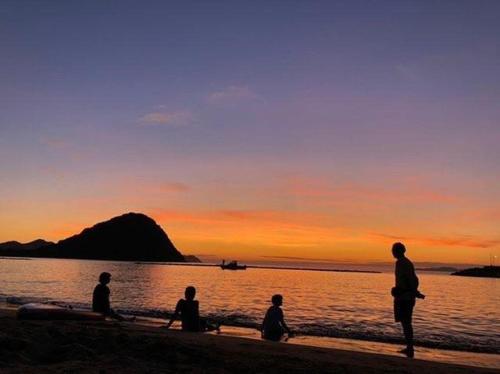Emisugahana Shipyard Site
menuMenu
A precious shipyard site where distinct Russian and Dutch shipbuilding technologies coexisted.




Highlights
- A component asset of the World Heritage site, "Industrial Heritage of Meiji Japan"
- Coexistence of distinct Russian and Dutch shipbuilding technologies
- A precious heritage site offering insights into the introduction of modern technology
- Existing stone breakwater from the period
- Visiting the Meirin-kan (school) beforehand to see the information panels will help you visualize the site better
Basic Information
- Address
- 5159-14 Tsubakihigashi, Hagi City, Yamaguchi Prefecture, Japan Search for tourist attractions in Yamaguchi
- Access
- 30 minutes by car from Edo Interchange 5 minutes by car from JR Nishi-Nippon Higashi-Hagi Station 2 minutes by car from Hagi Reflector Furnace Show route
- Op.Hours
- 24 hours a day
- Cld.Days
- None
- Fee
- Free
- INFO
- The Emisugahana Shipyard site has no remaining structures. You can visit the site and imagine what it was like back then. Nearby attractions include the Hagi Reflector Furnace and the Meirin-kan.
Overview
Recommended nearby attractions
Hagi Reflection Furnace

A precious reflection furnace site registered as a World Heritage site! A historical heritage where you can feel the technological prowess of that time.
Shokasonjuku (松下村塾)

A World Heritage site, this school educated the individuals who spearheaded Japan's modernization.
Hamazaki Preservation District for Groups of Historic Buildings

Explore streetscapes that retain the atmosphere of the Edo period, allowing you to experience a sense of history.
Hagi Castle Ruins

Hagi Castle Ruins is the site of the former castle of the Mōri clan, a powerful feudal lord in western Japan. The expansive grounds retain sections of the original stone walls and moats, offering a glimpse into a captivating historical past.
Hagi-yaki Museum

A museum where you can delve deep into the history and culture of Hagi-yaki pottery. Observe traditional production methods and techniques.
Obata-yama Tatara Ironworks Site

A precious World Heritage site showcasing Edo-era iron-making technology. The iron produced here was used in the construction of the "Heishin Maru," the first Western-style warship of the Hagi clan.
Former Atsuga Mori Family Hagi Residence Long House

The largest samurai residence in Hagi, perfect for visiting alongside Hagi Castle Ruins and Shigatsu Park.
Former Residence of Takayoshi Kido

The former residence where Takayoshi Kido, a key figure in the Meiji Restoration, spent his later years.
Mori Clan Garden (Mori Museum)

Experience the historical garden where even Emperor Meiji stayed, combined with the Mori Museum showcasing numerous national treasures and important cultural properties—all in one location!
Hagi Meirin Gakusha

A facility preserving history and culture, located on the site of the former Meirin-kan, the Hagi Han School that produced many of the leaders of the Meiji Restoration.
Nearby Hotels
Ryokan Ganjima Besso

Hagi Royal Intelligent Hotel

Haginoyado Tomoe Ryokan

Kominka Guesthouse Hagi Akatsukiya

Ryokan Hagihonjin

Hagi Kanko Hotel

GRANDJETE HAGI

Business Hotel Hasegawa

Hostel Hagi Time

Rakuten STAY HOUSE x WILL STYLE Hagi Nishitamachi

